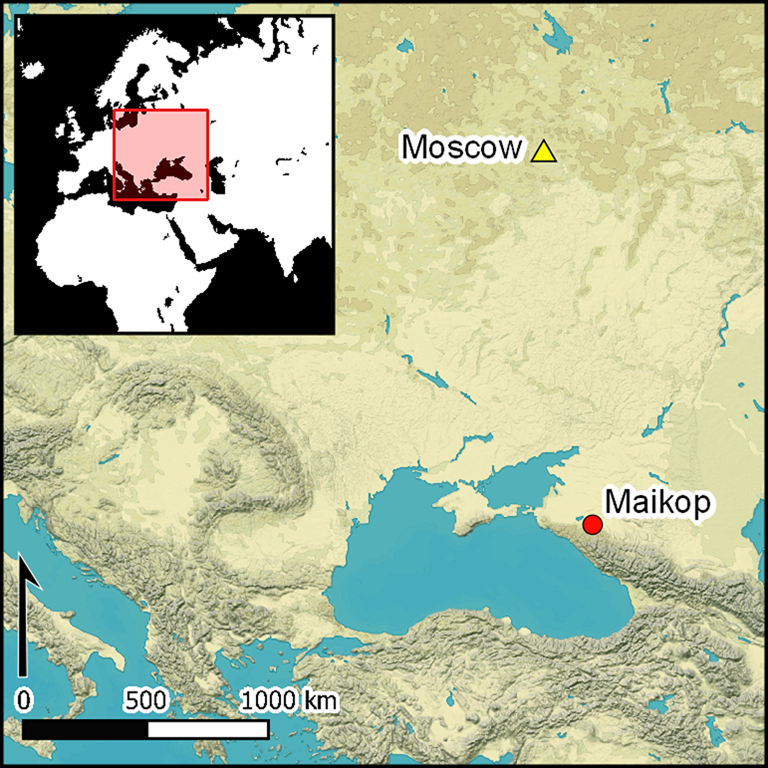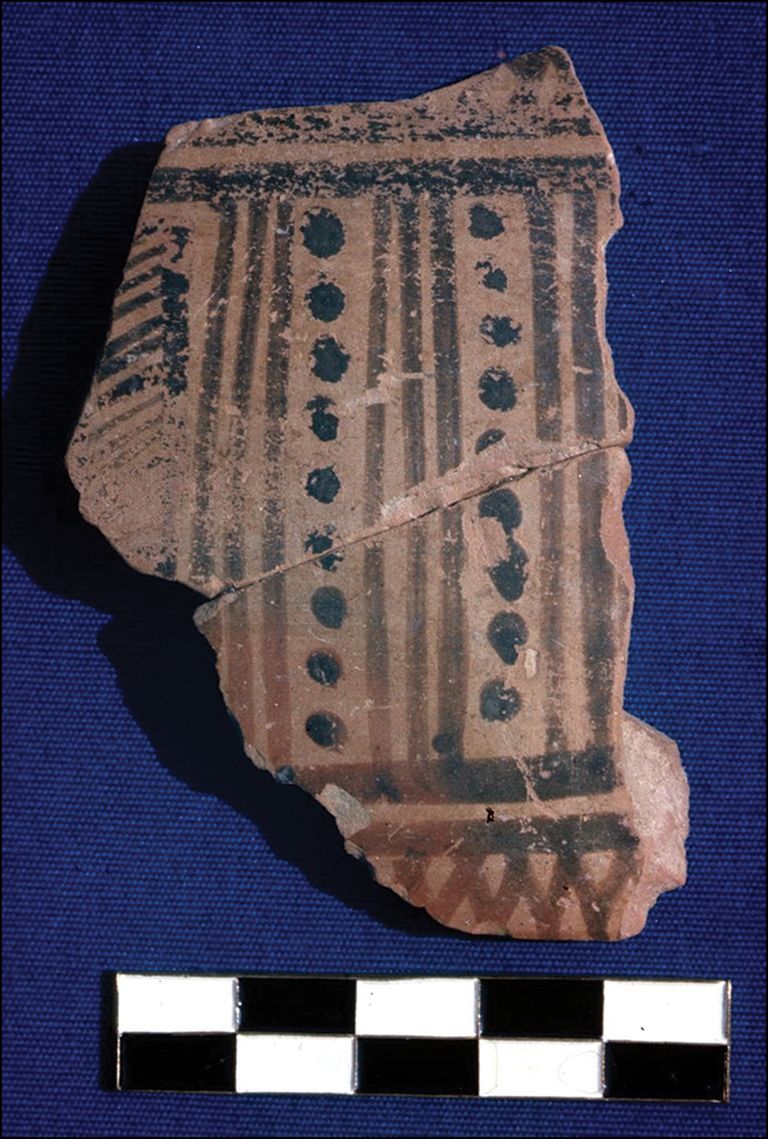Archaeologists have identified the oldest surviving drinking straws. The >5,000-year-old tubes from Russia were likely used for communal beer drinking.
Here's an #AntiquityThread on new #archaeology (paper: buff.ly/33we1Ad) 1/n 🧵
📷: Recreation of the straws in use
Here's an #AntiquityThread on new #archaeology (paper: buff.ly/33we1Ad) 1/n 🧵
📷: Recreation of the straws in use

These tubes were initially found in 1897 in the Maikop Kurgan in the Caucuses. This large burial mound is one of the most famous Bronze Age elite graves from the region 2/
📷: Location of the site
📷: Location of the site

The grave contained three individuals and hundreds of precious objects. This included the eight tubes, each over a metre long and some with bull figurines on the stem. 3/
📷: The grave layout, with the tubes highlighted.
📷: The grave layout, with the tubes highlighted.

Earlier research identified them as sceptres or perhaps poles for a canopy. They are now on display in the Hermitage Museum, St Petersburg, but their purpose remained unknown. 4/
📷: Tube on display
📷: Tube on display

As such, new research re-investigated them. Crucially, they discovered barley granules in the residue inside one of the straws. This provided direct evidence they were used for drinking - most likely beer. 5/
📷: One of the alternative hypotheses that could be rejected
📷: One of the alternative hypotheses that could be rejected
Drinking beer through long straws became common practice in the early Mesopotamian civilisation of Sumeria from the 3rd millennium BC onwards. Art depicts multiple long straws placed in a communal vessel, allowing people to drink together. 6/
📷: Ancient depictions of straws.
📷: Ancient depictions of straws.

During their research, the team identified several key similarities with such Sumerian straws. Notably, most of them feature metal strainers to help filter out the impurities common in ancient beer, something that is also seen in the Maikop straws. 7/
📷: The filter tips
📷: The filter tips

Such similarities with Sumerian finds led the researchers to conclude the Maikop tubes are also drinking straws. This would make them the oldest surviving drinking straws ever found, as they are over 5,000-years-old. 8/
📷: The Maikop straws
📷: The Maikop straws

However, this is not the oldest evidence of straws known. Seals from Iran and Iraq dating to the fifth to fourth millennium BC depict people drinking with them from a communal vessel. 9/
📷: Cylinder seal impression with straws in use (top right)
📷: Cylinder seal impression with straws in use (top right)

Given this consistent use of straws with this design for drinking beer from a communal vessel, the researchers concluded that the newly found straws were also likely used in the same way. 10/
📷: Diagram of the Maikop straws in use
📷: Diagram of the Maikop straws in use

Consistent with this, a large vessel was also found in the Maikop Kurgan that could hold enough beer for each of the eight drinkers to have seven pints. 11/
Despite these similarities, these new straws are found hundreds of kilometres away from the other early evidence of drinking straw use in Mesopotamia and the surrounding region. 12/
📷: Previously known straws from Mesopotamia and the surrounding region.
📷: Previously known straws from Mesopotamia and the surrounding region.

The finds contribute to a better understanding of the ritual banquets' early beginnings and drinking culture in hierarchical societies. Such practices must have been important and popular enough to spread between the two regions 13/
It also sheds light on the culture of Maikop, showing it had deep ties with its neighbours to the south and perhaps a taste for the luxury and spectacle of their drinking ceremonies. 14/
📷: Recreation of the straws in action
📷: Recreation of the straws in action

“Before having done this study, I would never have believed that in the most famous elite burial of the Early Bronze Age Caucasus, the main item would be neither weapons nor jewellery, but a set of precious beer-drinking straws,” said lead author Dr Trifonov. 15/
If you want to find out more, the original research is FREE to access:
'Party like a Sumerian: reinterpreting the ‘sceptres’ from the Maikop kurgan' - Viktor Trifonov, Denis Petrov & Larisa Savelieva
doi.org/10.15184/aqy.2…
16/16
🧵
'Party like a Sumerian: reinterpreting the ‘sceptres’ from the Maikop kurgan' - Viktor Trifonov, Denis Petrov & Larisa Savelieva
doi.org/10.15184/aqy.2…
16/16
🧵

• • •
Missing some Tweet in this thread? You can try to
force a refresh



















